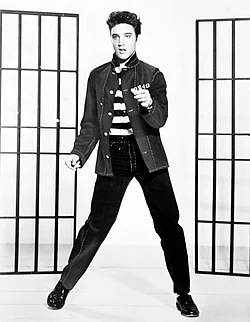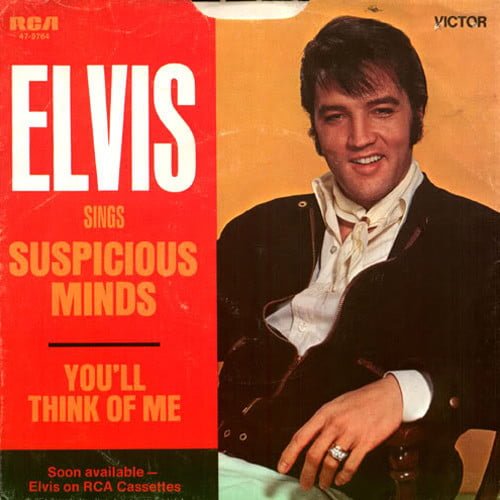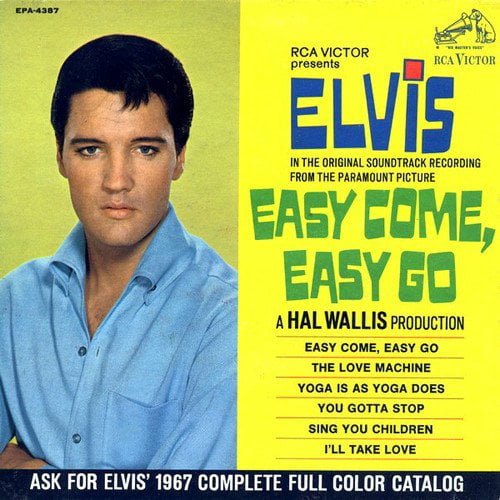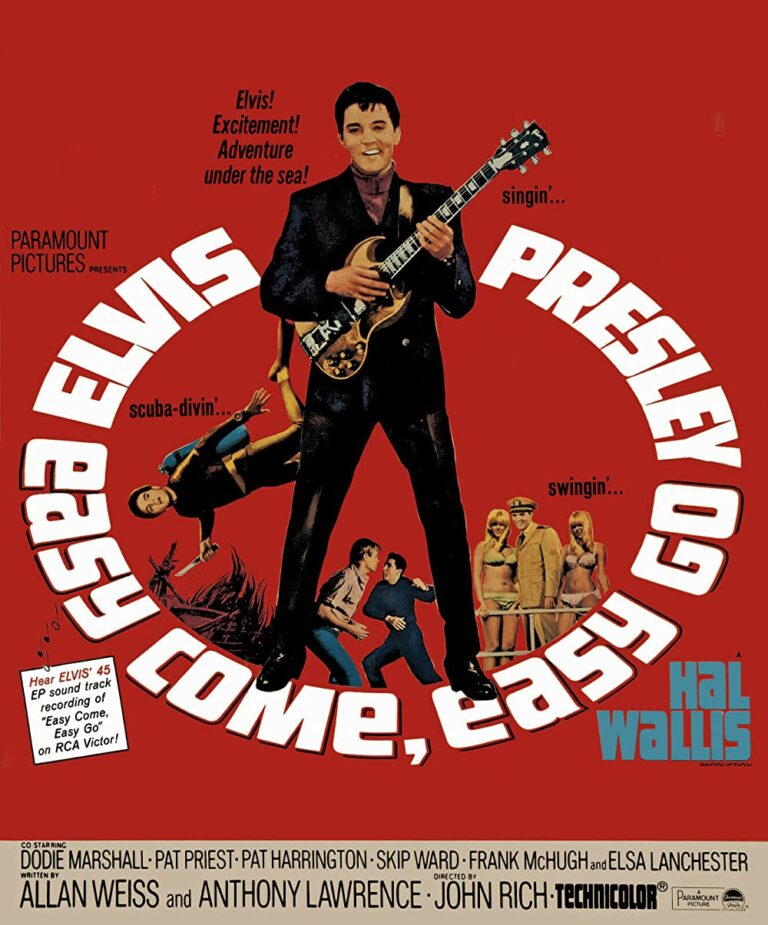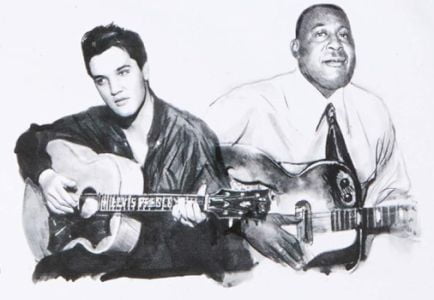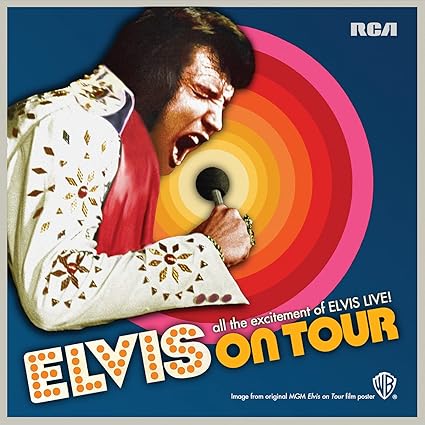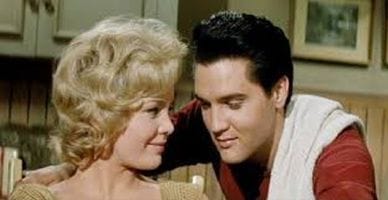
WILD IN THE COUNTRY
– Elvis Presley’s Last Dramatic Role –
(Part 8)
By Mariusz Ogieglo
Michael John Connolly, a Hollywood columnist writing for The Hollywood Reporter, was given a pass on the set a few weeks later. In his December 7, 1960, article, he recalled that when he arrived, the actors were working on a scene with a church bazaar. When Elvis spotted the reporter, he went over to greet him. “
Do you feel these calluses? ” Presley asked. “I got them last weekend playing slots in Las Vegas .” *
After a while, Connolly and Presley were joined by Tuesday Weld, who, looking around the set, stated resolutely: “If as many churchgoers went to the bazaars as we have extras here today, wouldn’t the collections be enormous? “
Another journalist whom Colonel Parker allowed to observe Elvis at work up close was Harrison Carroll of The Los Angeles Herald Express, the same one John Wayne considered both his mentor and one of the creators of his legendary pseudonym (John Wayne’s real name was Marion Robert Morrison).
The most important shots in the city of St. Helena, currently inhabited by almost six thousand ** people, were of course taken inside or in the immediate vicinity of the aforementioned The Ink House. Nevertheless, this was not the only place in the city where the film crew was seen. For example, they were still working in the building of the former cinema The Roxy *** , where they filmed, among other things, a dance party scene with the participation of the main characters – Glenn Tyler (Elvis) and Noreen Braxton (Tuesday Weld).
“I’ll never forget my meeting with Elvis ,” Nona Alessio, then a high school student from nearby Vallejo (about thirty-six miles from St. Helena), the first permanent seat of state government in California and the first and most famous facility on the West Coast for building and repairing war machines, recalled in an interview. “I kept begging my mother to let me skip school that day and go to St. Helena with my friends. After a while, she relented. She understood. She finally knew it was Elvis .”
After arriving at the venue, the teenagers quickly realized that they were not the only ones hoping to meet their idol that day.
“The line was at least a mile long ,” Alessio remembered. “Yet people lined up just to see Elvis and get his autograph. We had signs with us saying we were from Vallejo. We took our places in the line and waited. We waited and waited. Elvis would come out between takes and sign autographs. Still, the line moved really, really slowly .”
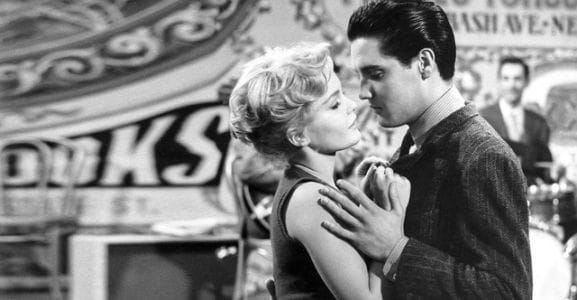
Unfortunately, to the chagrin of a large group of fans, at around 5 p.m. someone involved in the production informed those waiting to meet Presley that he would no longer be signing or posing for photos. Nona and her friends had to, or so they thought at the time, walk away empty-handed. “We just took our town signs and started to quietly back away ,” Alessio said. “And then we heard someone shout in our direction, ‘Hey, Vallejo! He wants to meet you! ‘
In an instant, the dream of meeting the famous singer, which had burst like a proverbial soap bubble just a few minutes earlier, now became a reality. “(Elvis, author’s note) He was sitting at the table eating a sandwich from the vending machine, you know those triangle sandwiches in the package and drinking milk ,” recalled an excited Allesio. “I don’t remember what he said to us then, but I’ll never forget how polite he was .” After a short conversation, the girls received not only their desired autographs but even… kisses”
Rebecca was standing two people in front of me ,” said Nona. “When she approached Elvis, he asked her if she had a card for him to sign. In response, he heard, ‘I just want you to kiss me.’ And he did. Right on the lips. I wanted to do the same so much, but when it was my turn I was speechless, and you have to know that I’m not a quiet person in everyday life .”
Judith Towey, another local teenager at the time, recounted her encounter with Presley with equal enthusiasm. “My mom drove me and my friend to St. Helena to see Elvis ,” recalled Towey, who, like Nona Alessio, missed school that day (Judith attended Napa High School). “We just took a chance that we might meet him. We didn’t even expect to actually meet him.
We pulled into the parking lot at The Ink House, which was also his private home at the time, and we saw him fooling around with some other guys. They were wrestling on the lawn. So we started walking toward him and he jumped up when he saw us and came out to meet us. He walked up to us and just said, ‘Hi,’ like he’d known us for ages. He was so nice. He was such a gentleman. He started talking to my mom and we admitted that we’d skipped school to see him. He really got a laugh out of it .”
Built in 1885 by Theron H. Ink – one of the first settlers of Napa County, The Ink House was not only a symbol of the entire region, which exactly one hundred years later (in 1985), at the request of the National Parks Service, was entered into the National Register of Historic Places. In the fall of 1960, this structure erected on the grounds of the former Helios Ranch also became a silent witness to countless meetings of Elvis Presley with his fans, as well as the creation of many memorable scenes for his seventh film.
Starting with the infamous scene that was ultimately removed from the finished film, in which Millie Perkins slaps Elvis so hard that he breaks her arm (!), through one of the longest (lasting almost seven minutes) and most passionate love scenes in Presley’s entire filmography, to the original ending – finally changed a few months later – in which Irene Sperry, played by Hope Lange, commits suicide.
“In the love scenes with Hope Lange, Elvis couldn’t find the right rhythm and tempo ,” Phillip Dunne recalled in an interview. “So I told him to listen to Bach’s ‘Fifth Brandenburg Concerto ‘**** . And he did. He listened carefully, and then he said, ‘Man, I know what this is all about,’ and he filmed the kisses very slowly in one take .”
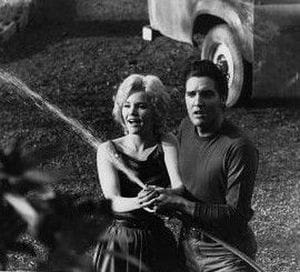
“The character I play is very fond of love scenes ,” Hope Lange told Vernon Scott (December 8, 1960) of the above sequence. “And because I was trying to do the best I could, my own feelings didn’t come into play. Compared to other actors I’ve worked with, (Elvis, author’s note) he’s very good at romantic scenes. You go into a scene as yourself, but as soon as the cameras start rolling, you let your character take control of your emotions and feelings. Sometimes it’s pretty impersonal. You can’t really get to know people you’re working with on a movie unless you’re in a lot of scenes with them .”
The outdoor shoot for “Wild In The Country” took nearly eight weeks, which was still largely outside the time frame of 20th Century Fox’s new policy, which involved reducing the actors’ working hours from the previous fifty days to just thirty-seven. For this reason, some scenes had to be filmed using the “day for night” method, a filming technique used to simulate night scenes shot in daylight. Used, for example, when filming at night is too difficult, expensive, or, as in the case of Presley’s film, when the shooting needs to be sped up.
The “day for night” method was used to film the famous sequence in which Elvis and Tuesday Weld spray Irene Sperry’s (Hope Lange) house with a garden hose. On screen, the scene takes place at night, while surviving photos from the film set clearly show that the actors worked on it during the day.
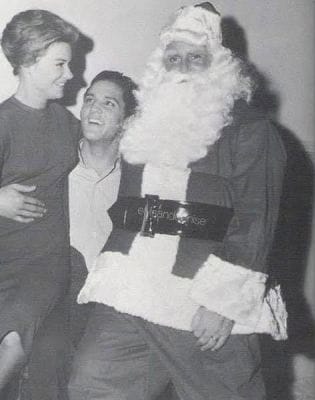
Finally, on December 23rd – just after Colonel Parker appeared on the set dressed as Santa Claus – the film was suspended and Elvis flew back to Memphis by chartered plane for Christmas. “In December, ‘Wild In The Country’ was suspended for Christmas ,” recalled Sonny West. “We were free to go back to Memphis. Colonel Parker always made sure Elvis had Christmas off. It was a special time for him. And it was a special time for all of us .At that time, everyone who worked for Elvis lived in Memphis, except Joe, who, if I remember correctly, had gone home to Chicago to spend the holidays with his family .”
Elvis and the rest of the crew did not return to filming “Wild In The Country” until after the New Year.
- Elvis, accompanied by Charlie Hodge, Alan Fortas, Red West and Joe Esposito spent two days in Las Vegas, from November 26 to 27, 1960
- According to the 2010 census, the city of St. Helena has a population of five thousand eight hundred and fourteen people.
- The Roxy closed in January 1976. After a brief renovation later that year, the building was reopened as the Liberty Theater. The cinema was eventually demolished and rebuilt in 1996, and has been operating as the Cameo Cinema since August 1997.
- One of the six baroque concertos composed by Johann Sebastian Bach in the years 1718-1721 and given to the Margrave of Brandenburg, Christian Ludwig in 1721. The original title of the concert mentioned by the director is “Brandenburg Concerto in D major”
https://www.facebook.com/people/ELVIS-Promised-Land/61564718623769
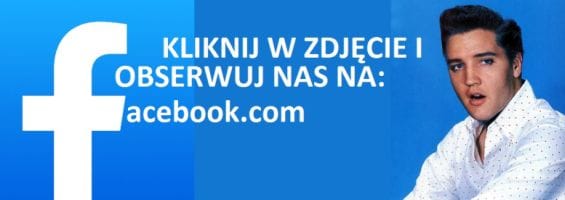
If you want to visit more articles about the life of Elvis Presley, enter the following Elvis Radio 24h link: https://elvisradio24h.com/tag/articles Thanks TCB
We remind you that you can also listen to Elvis Radio 24 hours on your mobile phone by downloading our free applications for Android in the Play Store https://play.google.com/store/apps/details?id=com.icreo.elvisradio24h1, and for iPhone in your Apple Store https://apps.apple.com/app/elvis-radio-24h/id6444257119. Thank you very much!!..
